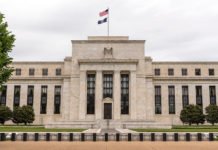Markets
Higher than expected US January inflation abruptly ended the low-volatility goldilocks context that dominated trading of late by dashing hopes that the Fed will be in a position to cut rates soon to facilitate a perfect soft landing. Headline inflation proved sticky at 0.3% M/M. Due to base effects, Y/Y inflation still slowed from 3.4% to 3.1%, but the hoped for return below 3% for the first time since March 2021 didn’t materialize. Core inflation even reaccelerated from 0.3% M/M to 0.4%, keeping the Y/Y measure at 3.9%. The move was driven by a broad-based rise in services components (in the first place housing-related inflation). This is almost exactly the opposite of what the Fed is looking for to feel comfortable that inflation is heading to the target soon and in a sustainable way. Markets now think that the May rate cut is becoming unlikely, with a first 25 bps move lower only fully discounted for June. Further down the curve, US yields blew beyond the YTD peak/resistance levels. Yields jumped between 18.4 bps (2-y) and 8.3 bps (30-y), making the curve again more inverse. The US 10-y real yield returned north of the 2% mark for the first time since the Fed December meeting. A fragile economic context forced EMU yields to decouple. German yields added 7 bps for the 2-y but 30-y remained unchanged. Rising uncertainty on when and how much oxygen the Fed will be able to provide in the short-to -medium term overthrew equity investors’ goldilocks narrative. US equities lost up to 1.8% (Nasdaq). Higher (real) yields, better economic prospects and the return of risk-off was a perfect world for the dollar. DXY jumped from the 104 area to just below 105. USD/JPY easily regained the 150 barrier (close 150.80). EUR/USD is at risk of losing the 1.0712/24 support. (close 1.0709).
Asian equities are ceding ground after the WS setback, but losses mostly are contained to 1% (or even less). USD/JPY jumping beyond 150 (150.5) triggered several verbal FX warnings from Japanese officials. Later today, the calendar in US and EMU is thin, but markets will look out for the assessment of Fed governors after the US CPI beat. Tomorrow’s US retail sales is the next real highlight. Still we assume that a EUR/USD break below 1.07 be difficult to avoid. UK January price data were slightly softer than expected this morning. Headline inflation declined 0.6% M/M (vs +0.4% in Dec), keeping the Y/Y-measure at 4%. Core inflation was unchanged at 5.1% (5.2% expected) with a similar picture for service inflation (6.5% from 6.4%, but 6.8% expected). In a first reaction, sterling weakens with EUR/GBP rebounding to 0.852. However, today’s data still suggest that the BoE needs time to consider starting rate cuts. Euro weakness probably also will prevent a sustained EUR/GBP rebound.
News & Views
The Belgian Debt Agency (BDA) in an emailed statement announced it will issue two new retail bonds on March 4. They will carry a one-year and three-year maturity with the coupon to be determined on February 20. The maximum amount raised will be capped at €6bn. The BDA’s funding plan projects to raise €2bn via retail bonds with a minimum maturity of three year. This means the bulk of that €6bn will be concentrated in the one-year Note, with which the agency plans to raise a total of €13.5bn this year to compensate for the sharp outflow when the September 2023 (€22bn) Note expires later this year. The discussion to retain the fiscal-friendly regime as proposed by Finance Minister van Peteghem is ongoing. Budget Secretary Bertrand needs to approve the suggestion no later than Monday but already said she wouldn’t do so as it is fiscally not prudent.
Japan issued the world’s first sovereign transition bond this morning. The country sold JPY800bn of 10-year Climate Transition Bonds at a yield slightly lower than the one on regular government debt. This so-called greenium is generally seen in environmental bonds. But that it was also the case for CTBs was remarkable. CTBs help finance the shift to cleaner technology without specifying what project the proceeds are used for exactly (unlike green bonds). Investors for this reason have previously expressed reluctance to swoop in on them and it was a key reason for CTB issuance to have stalled elsewhere in the world. The relatively small size (about a third of a regular 10-y bond sale) and the fact that it is eligible to be sold at the BoJ’s debt operations were seen as supporting the sale. The Japanese government plans to raise about JPY20tn over the next 10 years with CTBs.














